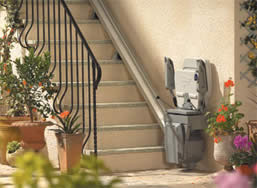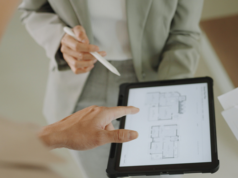
Smart homes can create great opportunities for people with disabilities or physical impairments, providing them with the means to better take care of themselves.

Smart homes aren’t just about showing off the latest gadgets and technology, they can also be about increasing your mobility and comfort around the home, giving people with disabilities or physical impairments better means with which to take care of themselves. Particularly for people who are paraplegic or quadriplegic, a smart home featuring a variety of different home automation technologies can make a huge difference.
What types of controls are available?
There are a lot of different systems and home automation enhancements that can be installed to cater for special needs. Below are just a few:
Lifts
An elevator can be installed in your home if stairs aren’t an option. While lifts do require more space to be installed, they can be fitted inside or outside to provide as much movement around your home as you need.
Stair lifts
Usually installed where a standard lift is not possible, stair lifts are installed on the side of a staircase and consist of a chair on tracks that follows the route of the stairs. In most residential installations the stair lift runs on battery power, and can be charged when not in use.
Wireless controls
Applications on smart phones or tablets give you control of your home in the palm of your hand. In situations where mobility or pushing buttons may be difficult, the large interface of the tablet allows you to command your home by sliding across buttons and controls. Being connected to the web, tablets and smart phones allow you to control any aspect of your home, from any area inside your home. Smart phones also allow you to command your home by voice or SMS message. Automated lighting can also help you get around the house without having to find switches.
Manual and triggered controls
If you have the ability to get around the house but find yourself fumbling with smaller switches and controls then manual replacements or automated triggers may be more your style. Larger controls, such as rocker switches, are available to make your automated home easier, without all the fancy gadgets. Likewise, installing trigger switches (like movement sensors or pressure sensors) can also help to ensure that things just turn on intuitively, exactly when they’re needed.
Special controls
While voice controls are commercially available and becoming very effective, there are also other initiatives being tested to assist in special needs automation. Retina tracking devices and the suck/blow system allow hands-free controls through eye movement or air in a tube. If you’re interested in these controls, speak to a specialist installer about what’s available and how it can be used.
Security
While almost all security programs work through a user interface, keypads and controls can be specialised for your needs. Coloured keypads and controls are available for the visually impaired, while some installers can also attach Braille stickers to the keypad for the blind. Visual, audio or physical cues, such as a vibrating pager on an ankle, can help alert you to inconsistencies or dangers in your home. Phones, wireless controls, smoke alarms and panic buttons can also be fitted to your needs.
Power systems
Of course, with any smart home, a reliance on power is essential for operation. Uninterrupted power supply (UPS) systems act as power backup when your main source of electricity fails. Differing from a standby generator or emergency power system, a UPS system kicks in right away, leaving your without a gap in power supply. This uninterrupted process can help you raise the alert about a power outage, but will only work for a short period of time before main power is reconnected.





